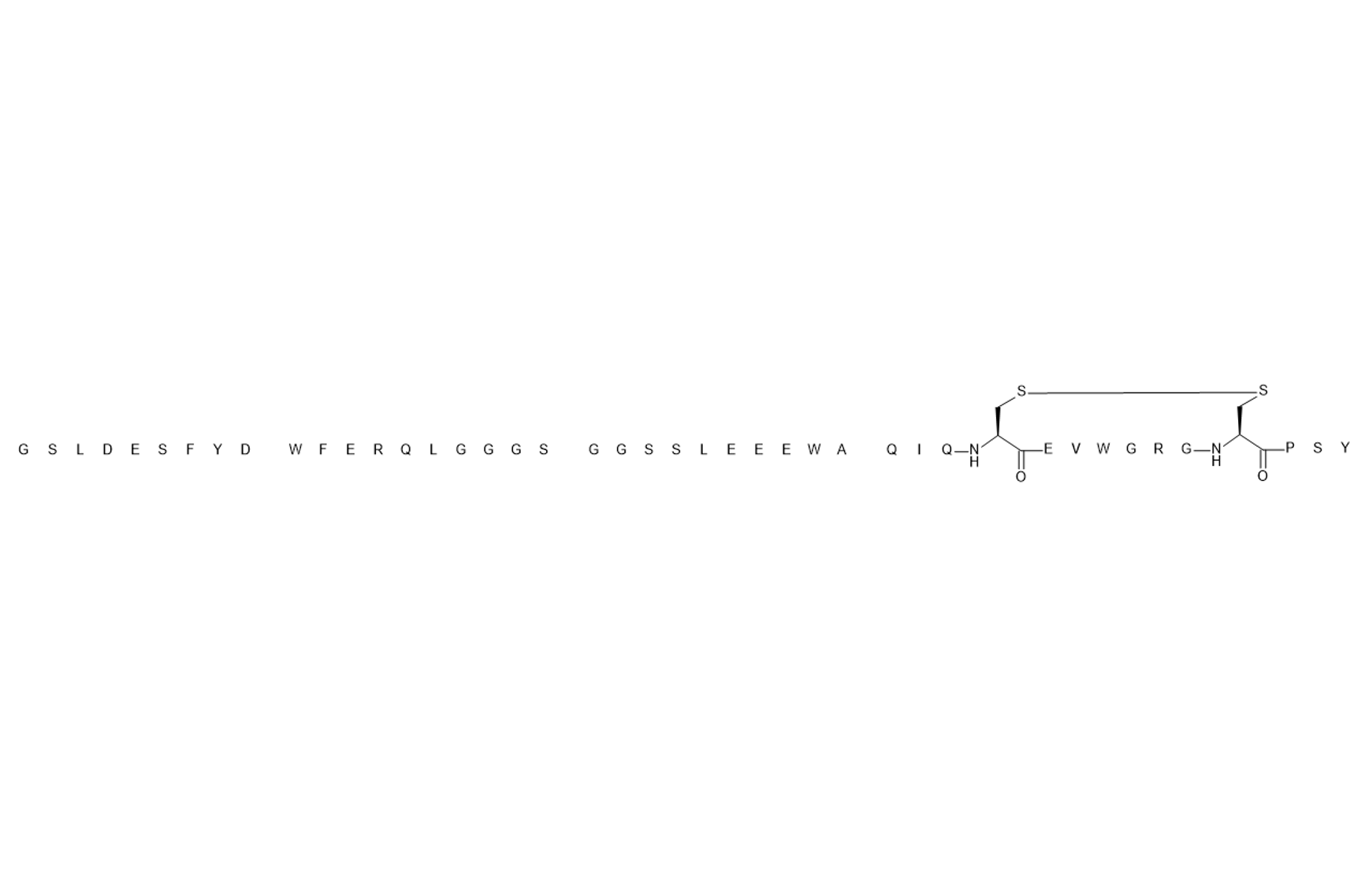
InsR peptide antagonist (S961)
Category
Insulin
ID
NNC0069-0961
Amount per vial
1000 nmol
Insulin binds to the insulin receptor (InsR), which exists in two alternatively spliced isoforms, InsR-A and InsR-B. The insulin receptor belongs to the same family of receptor tyrosine kinases as the IGF1 receptor (IGF1R) and insulin is therefore also able to bind to the IGF1R albeit with considerably lower affinity as compared to the InsR.
NNC0069-0961 (also known as S961) is a single chain peptide consisting of 43 amino acids, which has been shown to be a specific InsR antagonist. The affinity of S961 for the InsR is comparable to that of human insulin and the selectivity for the insulin receptor versus the IGF1 receptor is higher than that of human insulin. S961 is also an antagonist of the InsR of other species such as pig and rat and it also has considerable affinity for hybrid receptors consisting of InsR and IGF1R. S961 completely inhibits insulin action, both in cellular in vitro assays and in vivo in rats.
Thus, S961 exhibit high affinity and selectivity for the InsR and can be used to unravel the role of InsR signaling and function in both in vivo and in vitro experiments.
Category
Insulin
ID
NNC0069-0961
Amount per vial
1000 nmol
| Compound | NNC0069-0961 |
| MW (Da) | 4802.1 |
| pI (calculated) | 3.99 |
| Extinction coefficient (calculated),280 nm | 19605 |

Figure 1
2D sketch of the structure of NNC0069-0961. The compound is composed of natural amino acids and contains one disulfide bridge.The binding affinity of NNC0069-0961 for various InsR variants are given in the table below. The affinities were determined by competition assays either in a scintillation proximity assay (SPA) or a PEG precipitation assay format using solubilized holoreceptors (see the Schäffer et al. 2008 reference listed in the reference section for further details on the in vitro assays).
| Receptor | NNC0069-0961
(IC50, pM) | Human insulin
(IC50, pM) |
| Human InsR-A affinity (SPA assay, solubilized receptor), no HSA | 48 | 29 |
| Human InsR-B affinity (SPA assay,
solubilized receptor), no HSA | 27 | 22 |
| Rat InsR-A (PEG assay, solubilized receptor), no HSA | 56 | 27 |
| Pig InsR-A (PEG assay, solubilized
receptor), no HSA | 84 | 22 |
S961 induces hyperglycemia, hyperinsulinemia and insulin resistance in rats. S961 treatment induces significant increases in the plasma glucose and insulin levels. S961 induces glucose intolerance as determined by a glucose tolerance test. S961 treatment led to impaired insulin-mediated glucose disposal as determined by an insulin tolerance test.
Please see the Vikram and Jena 2010 reference listed in the reference section for further details.